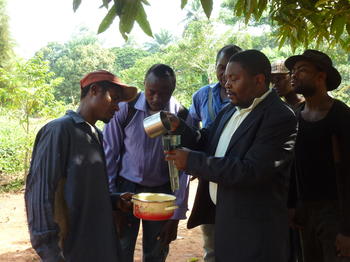Living lab-approach
A living lab is a research concept. A living lab is a user-centred, open-innovation ecosystem,often operating in a territorial context (e.g. city, agglomeration, region), integrating concurrent research and innovation processes within a public-private-people partnership.
The concept is based on a systematic user co-creation approach integrating research and innovation processes. These are integrated through the co-creation, exploration, experimentation and evaluation of innovative ideas, scenarios, concepts and related technological artefacts in real life use cases. Such use cases involve user communities, not only as observed subjects but also as a source of creation. This approach allows all involved stakeholders to concurrently consider both the global performance of a product or service and its potential adoption by users. This consideration may be made at the earlier stage of research and development and through all elements of the product life-cycle, from design up to recycling (source: Wikipedia).
The current projects are using the methodology for living labs for stakeholder-focused research approaches, operating in small river catchments. Three selected catchments areas are used by German and African MSc and PhD Students for joint research and development activities. Regularly visits of the living lab assures good quality assessment of the ecological functionality as well as the needs of the local population. Researchers, development trainers and students provide feedback to the locals population according to their research result. Simultaneously, practitioners from the region are trained in new methodologies, adapted to the needs in the catchments. The mutual activities of researchers, development trainers, locals, and practitioners is common focus all project activities. Management plans for determined catchment areas or living laboratories will be drafted in close cooperation.
The three living laboratories of the "IWM R&D CB"-project are the Krom Antonies catchment in South Africa, the Thiririka catchment in Kenya and the Upper Mefou sub-catchment in Cameroon.
